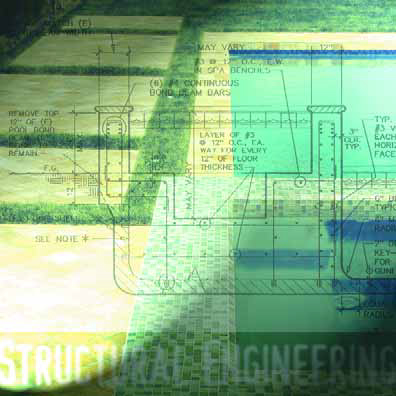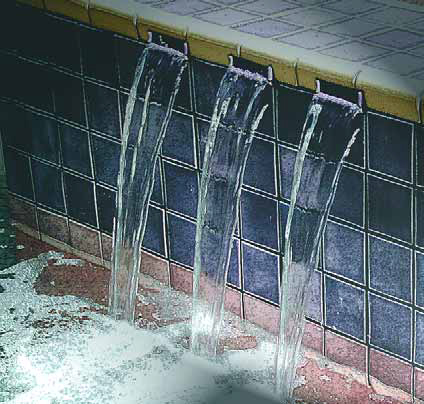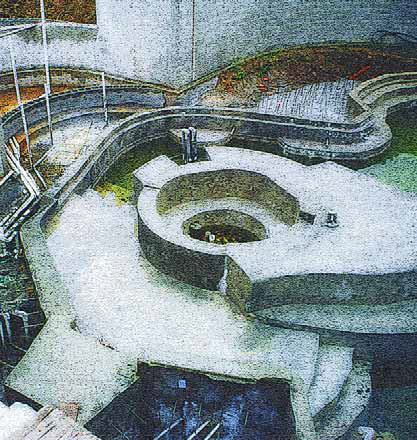spa design
Let me make an important point: As interesting as some of the details I discuss in these columns may be, many of the more significant ones wouldn't have any substance or value to my clients without the contributions of one very important person: my friend Mark Smith of Tarzana, Calif., whose firm takes care of my structural engineering. I'd go so far to say that he and his staff are critically important external members of my design team - professionals who know more than I will ever know about steel, concrete, tension and compression. Every single project I design and build is fully, individually engineered, and I refuse to make any assumptions on my own about what might be
One of the great things about working with different architects and designers the way we do is that, as builders of pools, spas and other watershapes, we enjoy opportunities to work across a broad range of design styles and sensibilities. In this instance, we're focusing on one of our favorite Southern California architects, Mark Singer. He's known regionally for crisp, clean, minimalist designs and is well regarded for his work on breathtaking lots along the coast in Laguna Beach, Newport Beach and other well-heeled cities overlooking the Pacific Ocean. To our good fortune, most of his projects include pools, spas, courtyard waterfeatures, outdoor sculptures and other amenities that enhance and extend his contemporary designs. Our most recent project with Singer was completed in the summer of 2004 at an older home in the beautiful beach community of Corona del Mar. The house itself was not originally designed by Singer, but it had been remodeled by him several times in the years since. In fact, so much has been done at this point that it's practically impossible to distinguish this residence from projects he has pursued from the ground up. COMPLETING A SCENE The homeowner is a wealthy land developer, a self-made man and a major fan of
Watershaping advanced by leaps and bounds from 1999 through 2004 – a journey of artistry…
Watershaping advanced by leaps and bounds from 1999 through 2004 – a journey of artistry…
I operate under the hopeful assumption that all professional watershapers know that detailed, quality construction plans are crucial to the success of any project. Too often, however, I get the unsettling feeling that some contractors in the watershaping trades see plan documents mainly as a means of securing a construction permit. Such a bare-minimum approach can lead to an endless array of problems that can be summed up simply: Plans lacking in detail leave way too many issues to chance and inevitably lead to mistakes. And because we all work in a field where things are quite literally
As much I enjoy seeing my own projects come to fruition, there's something wonderful in seeing watershapers I know achieve great results in their work. I admire and encourage the effort, especially when the outstanding outcomes are the result of a professional's concentrated efforts to improve his or her own skills. This is one of the reasons I teach: I take great satisfaction in sharing my techniques, sensibilities and the conviction that what I do is special, a true form of art.Sometimes I speak with former
We've all heard the phrase "less is more" so often that it's become a cliché, but there are still situations where there is powerful truth in those words. There is no question, for example, that watershapers can create tremendous beauty by using simple shapes and quality materials to accentuate and magnify a setting. This is particularly so when the watershaper exploits the alluring, reflective qualities of water itself to create a strong focal point while effectively blending the vessel into its setting. A case in point is the
It's one of the most horrific things that can happen to anyone who enters a pool or a spa: One moment you're having fun or relaxing, and in a terrible instant you're caught in a devastatingly painful and potentially fatal situation. Most people who become entrapped by pool, spa or wading-pool plumbing do survive, but all too often they suffer life-altering injuries. As with any aquatic safety issue, we all agree these incidents should be prevented, and a great many talented people from government, trade associations, research institutions, equipment manufacturers and consumer-safety groups have invested a tremendous amount of time in examining suction entrapment. For all of that effort, however, seeing our way to
Whether a spa is concrete or portable, custom or mass produced, sound hydraulics and good plumbing are needed if the spa's jets are to give clients the hydrotherapeutic action they crave. The manufacturers of portable spas do this work for their dealers, observes hydraulics expert Steve Gutai, putting watershapers who work in concrete at a disadvantage that must be addressed if a concrete spas are to compare favorably with a client's portable options.
The project I've been working on in the hills outside Hanover, Pa., has just about every feature, bell and whistle one can imagine. That inclusiveness of detail at every level has translated to an unusually intricate construction process, as I mentioned last time in discussing the excavation, forming, plumbing and steel phases. Now we get to the gunite. Where a garden-variety backyard pool involves placement of maybe 30 to 50 yards of concrete and some larger projects may run in the 50-to-70-yard range (and where most of mine tend to fall in the 90-to-130 yard range) - this project needed two gunite rigs shooting for two solid days, 12 to 13 hours each day. The pool shell alone (excluding the waterfall, the grotto and several other features we'll get into later) required a staggering 300 yards of concrete. That's about






















